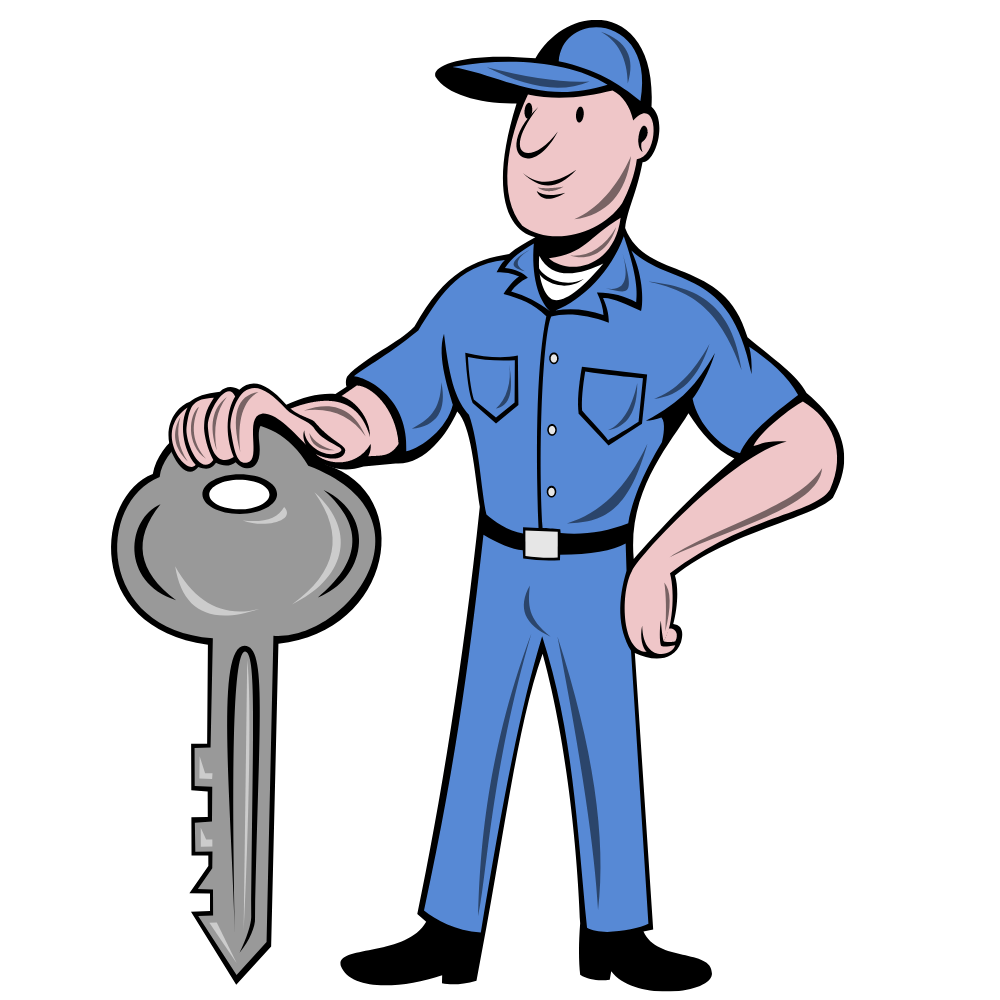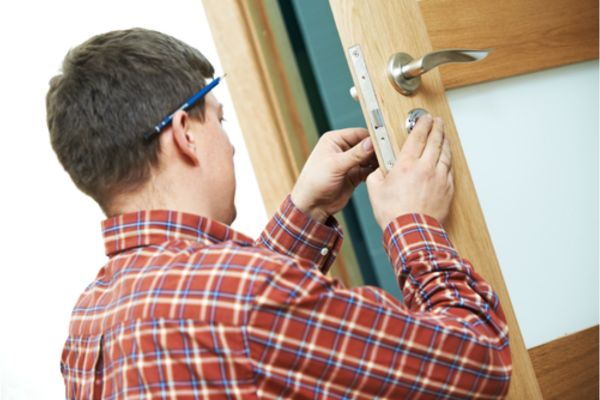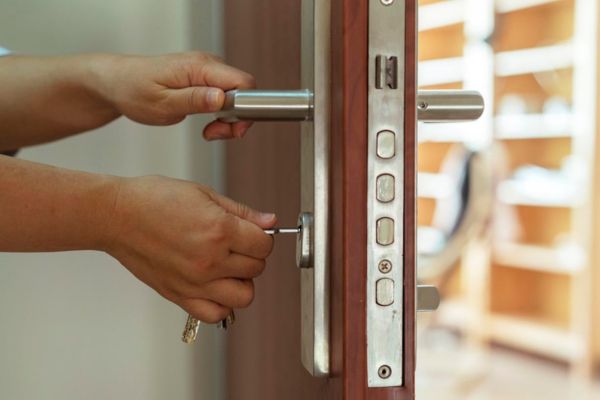1. Introduction
Struggling with a door lock that just won’t budge can be more than an inconvenience—it can disrupt your day and compromise your security. But don’t let a stubborn lock unsettle you. Many times, the Door Lock Fixes are simpler than you might think, and you can do it yourself with just a bit of know-how.
In bustling London, where security is as important as the historic charm of its doors, knowing how to keep your locks in working order is essential. Whether you’re dealing with the aftermath of a temperamental British rainstorm or the simple wear and tear of urban life, we’re here to guide you through easy fixes for when your door becomes a challenge to lock and unlock.
We’ll walk you through the common reasons locks start to stick and provide you with straightforward Door Lock Fixes that can save you from frustration—and possibly even a call to a locksmith. However, if you find yourself out of depth, our professional locksmith services are just a phone call away, ready to assist you throughout London and the surrounding areas.
Let’s turn that troublesome lock into a smooth operator once again with these helpful tips and tricks.
2. Common Reasons Why Locks Become Difficult to Operate
When your key refuses to turn, or you have to jiggle it just to get the door to lock, it can be a source of frustration. Understanding why these issues occur is the first step towards implementing Door Lock Fixes. Here are some of the typical culprits:
Misalignment of Door and Frame
One of the most frequent causes of lock troubles is a door that’s not properly aligned with the frame, which often necessitates Door Lock Fixes. Typically, this misalignment can arise from the house settling over time. Additionally, inconsistent temperatures or the wear and tear of repeated use can exacerbate the issue.
Buildup of Dirt and Grime
Like any other part of your home, locks can accumulate dirt and debris. Over time, this buildup can obstruct the moving parts inside the lock cylinder, making it hard to turn the key and necessitating Door Lock Fixes.
Weather-Related Issues
In London’s ever-changing climate, locks can expand or contract with the temperature swings, which can make Door Lock Fixes essential. A door that fits perfectly during one season might become problematic when the weather turns.
Worn-Out Keys or Locks
Keys and locks wear down with use. As the metal erodes, the precise mechanism of the lock can become less effective, resulting in a key that struggles to do its job.
By identifying the root cause of your lock issue, you can better understand how to apply Door Lock Fixes. In the following sections, we’ll explore some simple fixes that can help alleviate these common problems, often with just a few tools and a bit of patience.
3. Initial Checks and Preparations
Before you roll up your sleeves and get to work on your stubborn lock, there are some preliminary checks you should perform. These initial steps can help pinpoint the issue and even resolve the simplest problems without further ado.
Inspect the Door and Lock
Take a close look at your door and lock. Are there visible signs of damage or wear? Sometimes, the problem is as clear as daylight—a bent key, a loose doorknob, or visible obstructions in the keyhole.
Check the Key
It might sound obvious, but ensure you’re using the correct key. It’s easy to mix up keys, especially if you have several that look alike. Also, examine the key itself for signs of damage. If it’s bent or worn, it may be time for a new one.
Ensure Proper Door Alignment
Open and close your door a few times, observing how it sits in the frame. If the door seems to hang incorrectly or you notice it’s not level, this misalignment could be putting pressure on the lock mechanism.
Taking the time to perform these simple checks can save you a lot of effort. If everything looks good but your lock is still being troublesome, it’s time to move on to some hands-on fixes, which we’ll cover in the next section.
4. Simple Fixes You Can Do Yourself
If you’ve completed the initial checks and your door is still giving you grief, don’t worry. There are several easy fixes that you can try yourself. Here’s what you can do to make your lock turn smoothly again:
Lubricating the Lock Mechanism
A dry or sticky lock is a common issue, but it’s also one of the easiest to fix. Apply a silicone-based lubricant or graphite powder into the keyhole. These lubricants are preferable to oil-based products, which can attract more dirt over time. After application, gently work the key in and out of the lock to distribute the lubricant.
Cleaning the Key and Lock
Sometimes, all your lock needs is a good clean. Use a cotton swab or a soft cloth to clean the key and the keyhole. For a deeper clean, you can use a lock cleaning product designed to remove debris without leaving residue.
Adjusting the Strike Plate
The strike plate is where the bolt latches into the frame. A misaligned plate can hinder locking and unlocking. To fix it, unscrew the plate, adjust it so the latch fits smoothly into the hole, and then screw it back securely.
Tightening Loose Screws
Loose hardware can affect the function of your lock. Tighten any loose screws on the lock and hinges. However, be careful not to over-tighten, as this can also cause misalignment.
These fixes are usually enough to solve most sticky lock situations. With a bit of patience and some minor adjustments, you can often get your lock back to working like new. If these solutions don’t do the trick, it may be time to consider a deeper issue or to call in a professional.
5. When to Adjust or Replace Weather Stripping
Weather stripping is crucial for keeping your home insulated from the elements, but it can sometimes interfere with the smooth operation of your door lock. Here’s how to tell if your weather stripping might be the problem and what to do about it:
Diagnosing Weather Stripping Issues
If your door is hard to lock and unlock only at certain times of the year or during certain weather conditions, weather stripping could be the culprit. Check the stripping around the door frame. Is it bulging or has it become stiff? These conditions can push against the door and lead to misalignment, making it difficult for the lock to function properly.
Adjusting the Weather Stripping
Sometimes, simply adjusting the position of the weather stripping can resolve the issue. Ensure that it is not too tight against the door, preventing it from closing properly. If it’s in good condition but misaligned, you can usually reposition it with just a screwdriver.
Replacing the Weather Stripping
If the weather stripping is damaged or has lost its flexibility, it’s likely time for a replacement. This is a simple process that involves removing the old stripping, cleaning the surface, and applying new stripping. Make sure to choose the correct size and material for your door to ensure a proper fit.
Maintaining your weather stripping aids lock operation and enhances home energy efficiency. Using the correct tools and some time, you can make sure your door closes tightly and locks without issue, regardless of the weather.
6. DIY Lock Maintenance Tips (main)
Regular maintenance is key to ensuring your door locks remain in good working order. Here are some straightforward maintenance tips that can extend the life of your locks and keys, saving you time and hassle in the long run.
Regular Cleaning and Lubrication
Dirt and debris are the enemies of a smooth-operating lock. Use a mild cleaner or just a damp cloth to wipe down your lock and keyhole regularly. For lubrication, a quick spray of graphite-based lubricant every six months can prevent sticking and wear.
Periodic Alignment Checks
Over time, doors can sag or warp slightly, causing misalignment with the lock mechanism. Periodically check that your door is hanging straight and making contact with the strike plate properly. Adjust as necessary to avoid putting unnecessary strain on the lock.
Key Duplication
If your key is beginning to show signs of wear, it’s wise to get a duplicate made before it’s too late. Using a worn key can gradually damage the lock mechanism over time. Therefore, to ensure the best precision, always make duplicates from the original key, not another copy.
Tighten Hardware
As part of your regular home maintenance, check the screws on your door hardware, including the lock, handle, and hinges. Tightening loose screws can prevent a multitude of problems down the line.
By incorporating these simple practices into your home care routine, you can significantly reduce the likelihood of lock issues. Remember, a little bit of preventative maintenance can go a long way towards keeping your home secure and your locks functioning smoothly.
7. Understanding When It’s Time to Call a Professional
While many lock issues can be resolved with the DIY Door Lock Fixes we’ve discussed, there are times when calling a professional locksmith is not just recommended, it’s necessary. Here’s how to know when to make that call:
Persistent Issues
If you’ve tried the above Door Lock Fixes and your lock is still not functioning properly, it may indicate a more complex problem within the lock mechanism that requires professional tools and expertise.
Upgrading Your Locks
Maybe it’s not about a repair, but an upgrade. If you’re considering higher security locks, smart locks, or simply want advice on the best Door Lock Fixes and mechanisms for your needs, a professional locksmith can provide invaluable guidance and installation services.
Post-Break-In Repairs
After a break-in or an attempted break-in, it’s essential to have your locks assessed by a professional. They can perform necessary Door Lock Fixes, repair any damage, and suggest enhanced security measures to prevent future incidents.
Key Snapped in the Lock
If a key has broken off inside the lock, it’s often best to call a locksmith for Door Lock Fixes. They have the tools to remove the broken piece without damaging the lock and can produce a new key on the spot.
Benefits of Professional Lock Maintenance
Professional locksmiths bring a level of expertise that ensures your locks are not just fixed, but optimized for Door Lock Fixes. They can diagnose issues that might not be apparent to the untrained eye, and their work often comes with guarantees, giving you peace of mind.
In London, where security is paramount, having a trusted professional locksmith just a call away is an invaluable resource for Door Lock Fixes. They can provide emergency services, routine maintenance, and security assessments to keep your home or business safe.
Remember, while it’s great to solve problems on your own, there’s no substitute for the skill and experience of a seasoned locksmith.
8. Preventative Measures to Avoid Future Issues
Prevention is better than cure, and this is especially true when it comes to the locks on your doors. Here are some Door Lock Fixes and measures you can take to help prevent future issues:
Upgrade to Smart Locks
Smart locks offer keyless entry options and can often be more reliable than traditional locks, making them a proactive Door Lock Fixes measure. They can also alert you to any tampering and can be easily reprogrammed if security codes are compromised.
Install High-Quality Door Hardware
Furthermore, investing in high-quality locks and door hardware from reputable brands can significantly reduce the chances of mechanical failure. Additionally, look for products with robust warranties and high security ratings to ensure long-term reliability and safety.
Regular Professional Inspections
For commercial properties, or even for residential properties with high security needs, regular inspections by a professional locksmith can help identify and rectify potential issues before they become problematic.
Be Mindful of Your Keys
Firstly, take good care of your keys; moreover, avoid using them as tools or carrying them in a way that puts stress on them. Consequently, a bent or weakened key is more likely to break or, in addition, cause lock damage.
Educate Your Household
Ensure that everyone in your household knows how to properly operate the locks and is aware of the signs that indicate a lock might be failing. Misuse can lead to damage, so proper handling is essential.
Consequently, by taking these preventative steps, you can help ensure that your locks remain in good working order, providing security and peace of mind for your home or business.
9. Conclusion
Dealing with a door that’s hard to lock or unlock can be a frustrating ordeal, but as we’ve seen, there are several easy fixes that you can try to solve the problem. From simple cleaning and lubrication to adjusting the strike plate or weather stripping, these tips can help keep your locks turning smoothly.
However, it’s important to know when a problem is beyond a quick fix. Persistent issues, security upgrades, or damage from break-ins are all scenarios where the expertise of a professional locksmith becomes invaluable. Not only can a locksmith provide immediate relief and repairs, but they can also offer advice and services that will enhance the security of your property in the long run.
Remember, your door locks are the first line of defense in your home security. Keeping them in good working order is not just about convenience; it’s about keeping you, your family, or your business safe. And when it comes to security, it’s always better to be proactive rather than reactive.
If you’re in London or the surrounding areas and need assistance with your locks, or if you’re interested in a security upgrade, don’t hesitate to reach out to our expert locksmith services. Our team is ready to provide you with fast, reliable, and friendly assistance.







